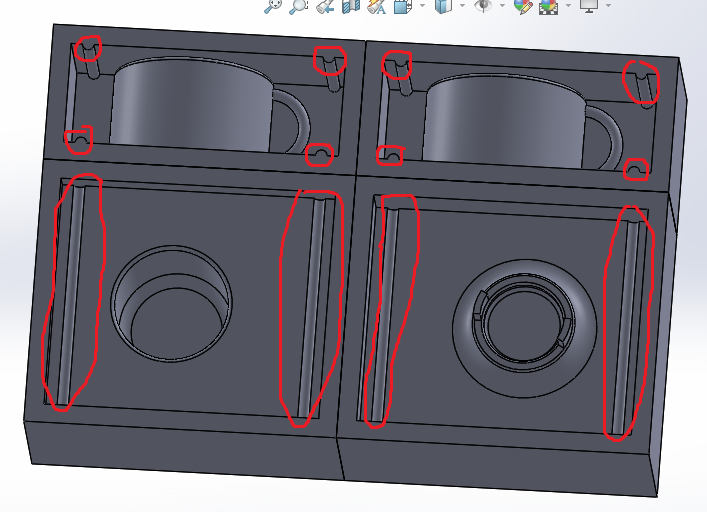12. Molding and casting¶
Group assignment:¶
-
Review the safety data sheets for each of your molding and casting materials
-
Make and compare test casts with each of them
To see our group assignment click here
Individual assignment:¶
- Design a mold around the stock and tooling that you’ll be using, mill it (rough cut + (at least) three-axis finish cut), and use it to cast parts.
For this week’s assignment we decided to make a coffee cup mold.
To achieve this we have divided our work into 4 parts: the design of the coffee cup, the cutting of the coffee cup in several parts for the 2.5 D machining with the Roland SRM-20, the realization of the negative molds and finally the realization of the coffee cup
Coffee cup design¶
for the design of our coffee cup we used SolidWorks software here are the results below
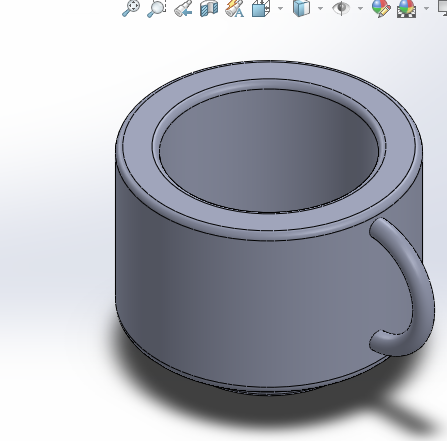
After analyzing the 3D model of the coffee cup we decided to cut it in 4 parts to be able to machine it with the Roland SRM20 and avoid undercuts. For the modeling of the different parts to be machined we used SolidWorks here are the results below
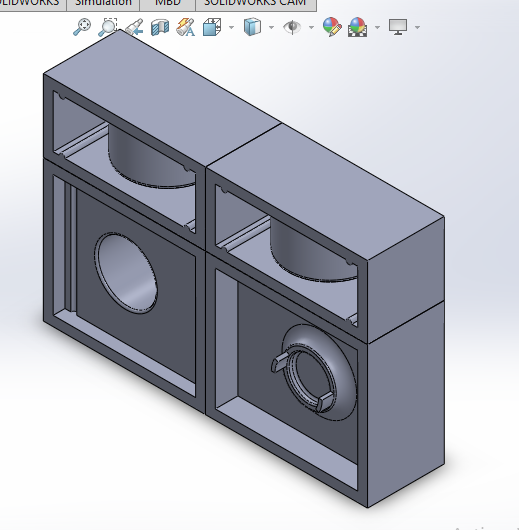

Machining of the different parts of our mold¶
For the manufacture of the different parts of our mold we used a machinable wax as shown below with the Roland SRM-20 and the 1/8” cutter

After finishing the design of the different parts on solidWorks, we generated a file in .STL format.
For the toolpath generation we used mods CE. but unfortunately we had several problems:
- the generation of the finishing toolpath with the option “mill 3D stl” each time we click on “calculate” we get an error page as shown below
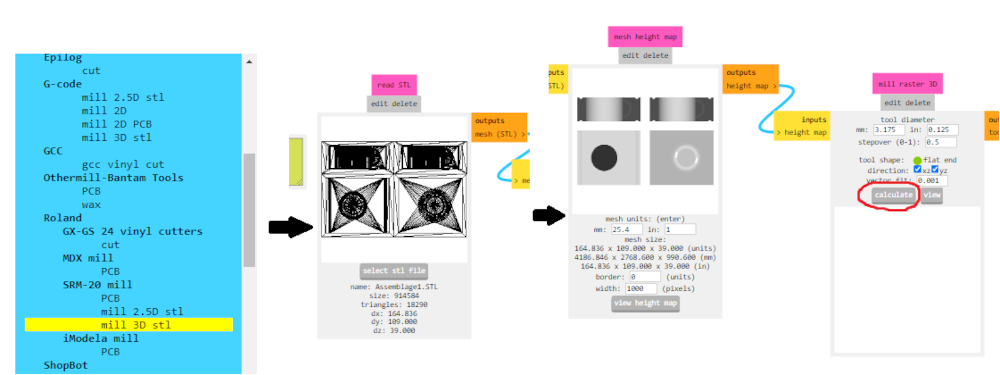
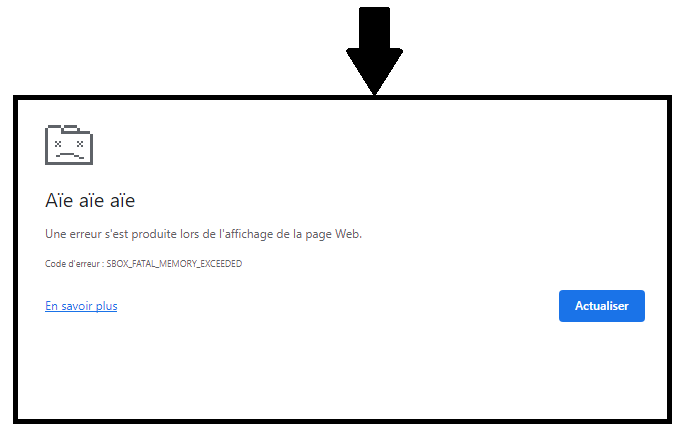
- We got a burr when machining the blank, as shown below.
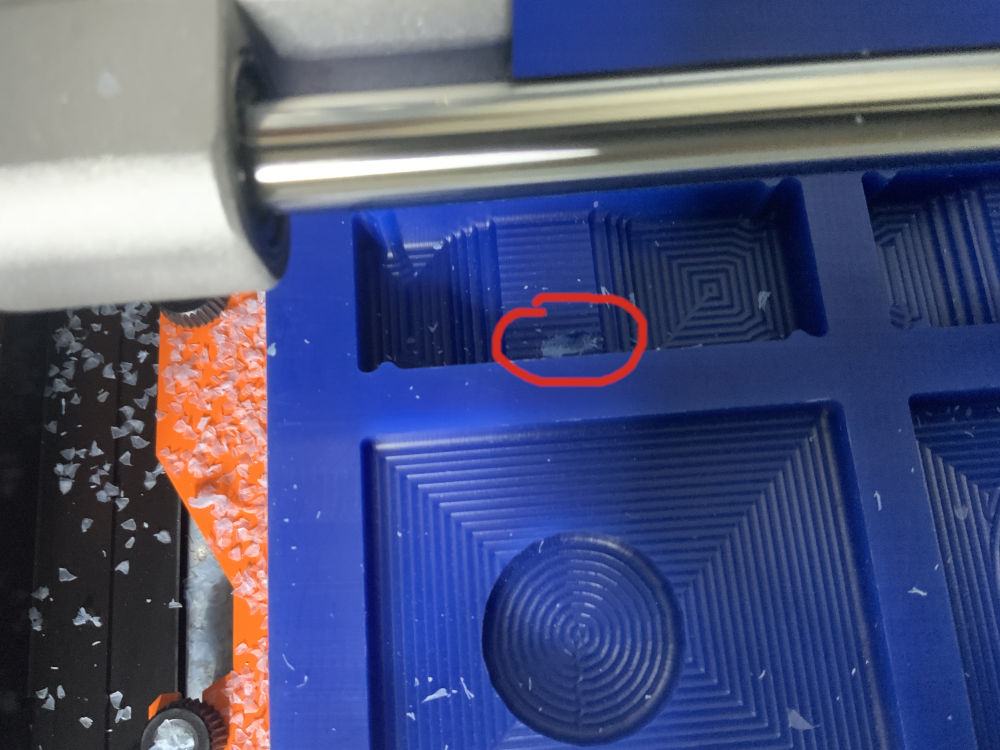
Given all these problems, we decided to use V-carve to generate the toolpaths. To do so, we proceeded as follows:
- We opened the stl file of our mold with v-carve and set the import parameters as shown below
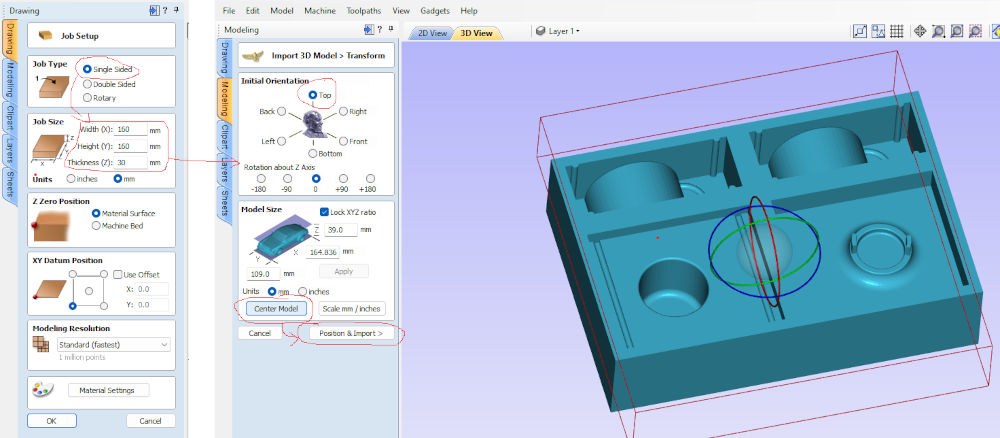
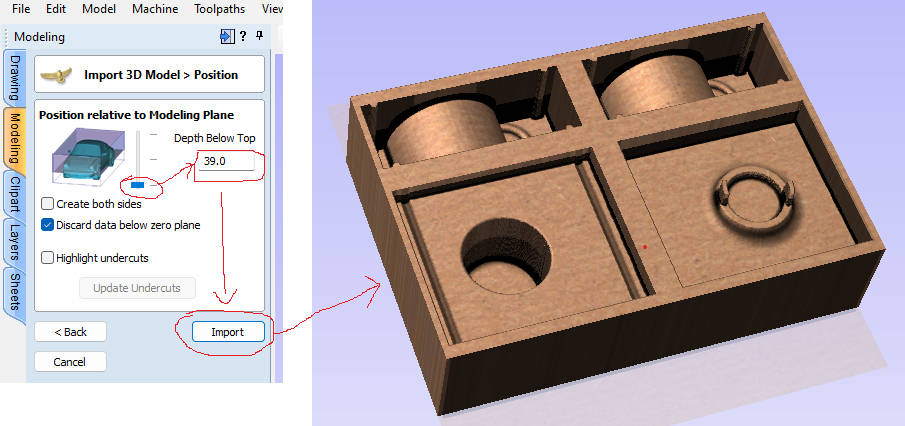
- Once the import is finished, we proceeded to the generation of the toolpaths. To do this we used the “3D Roughing Toolpath” option for the roughing and the “3D finishing Toolpath” option for the finishing. To generate the roughing toolpath we proceeded as follows.
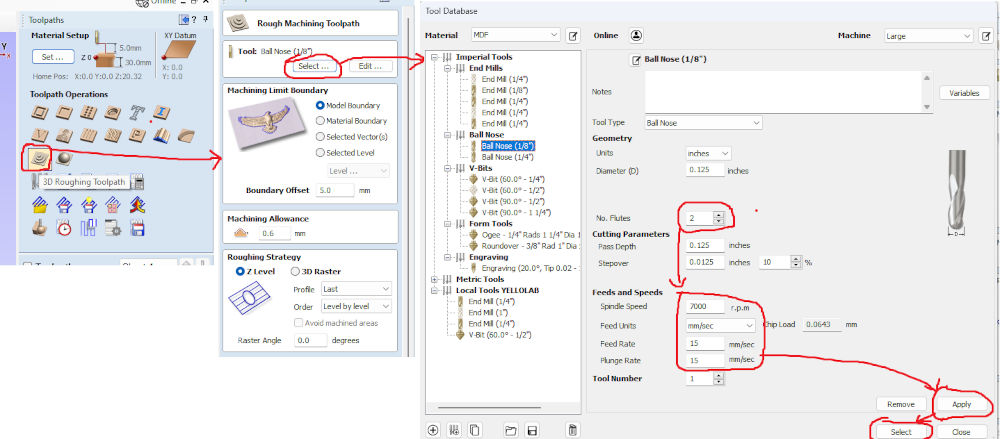

- We proceeded in the same way as below to generate the finishing toolpaths. Once the toolpaths were generated we proceeded to their registration as indicated below.
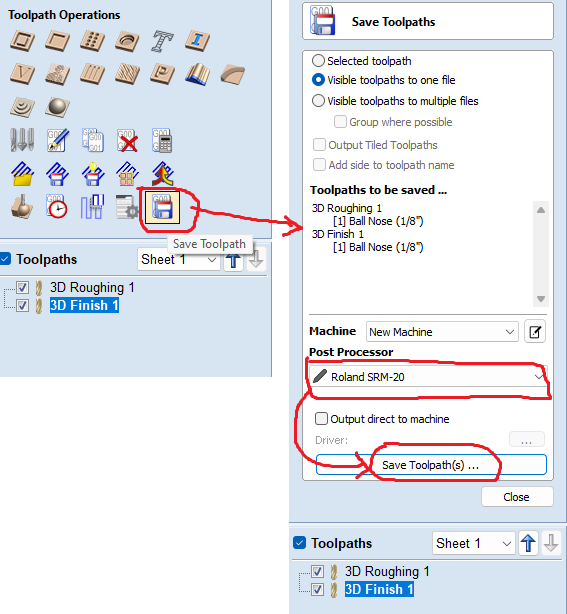
For the machining procedure with the Roland SMR20 milling machine see the page of Week 8 (Electronics production).
After 8 hours of machining here is the final result we obtained.
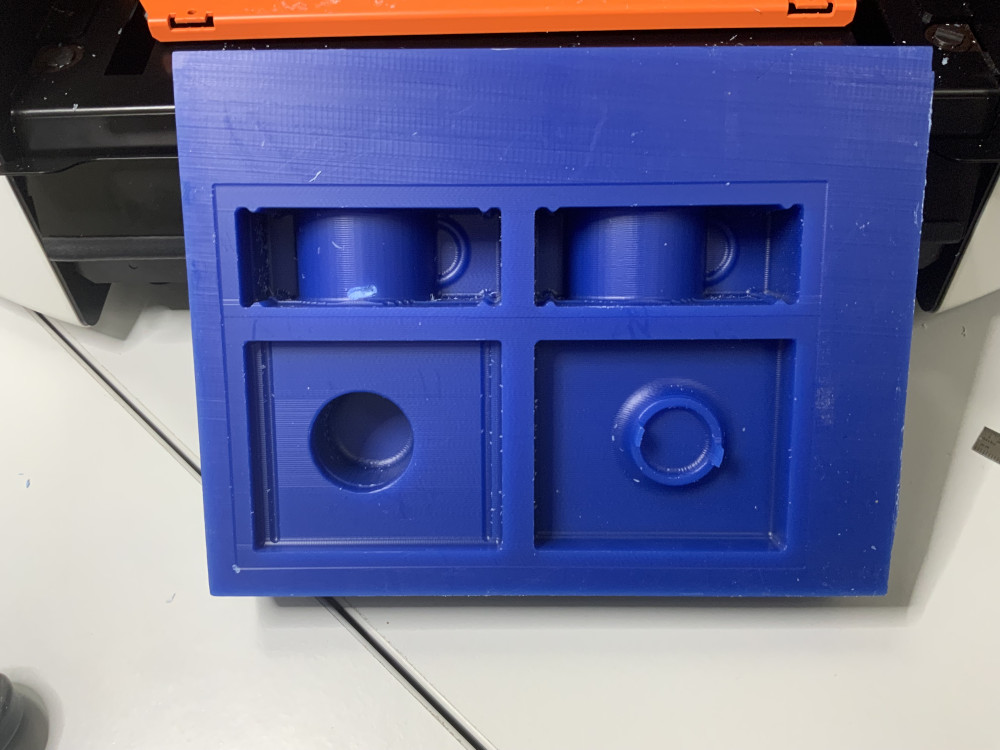
Realization of negative molds¶
For the production of the negative molds we used SORTA-Clear 37 silicone mold rubber.
Caution: chemical products for molding can be dangerous for your health, for this reason there are safety rules that must be respected. we have selected the most relevant ones for us for more details click here
Safety
- Keep out of reach of children
- Use in a properly ventilated area (“room-size” ventilation).
- Wear safety glasses, long sleeves and rubber gloves to minimize the risk of contamination.
- Wear only vinyl gloves. Latex gloves will prevent the rubber from hardening.
For the use of SORTA-Clear 37 silicone we have referred to the technical data sheet from which we have derived the essential information below.
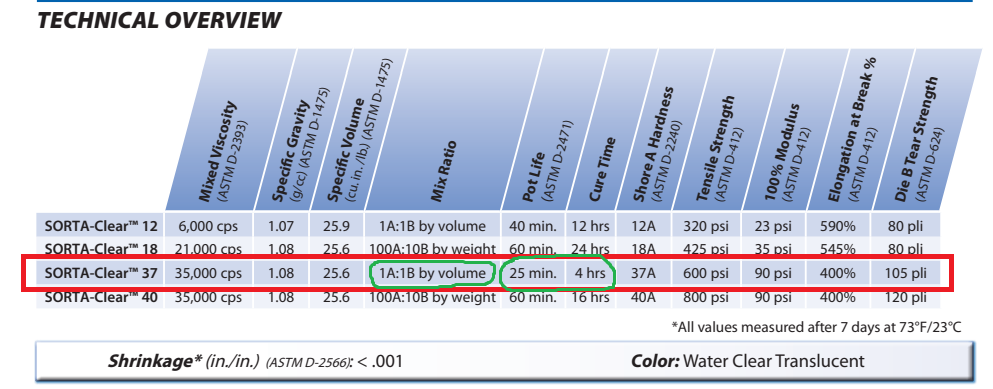
After following the instructions for mixing and pouring the SORTA-clear 37 silicone we obtained the following results.

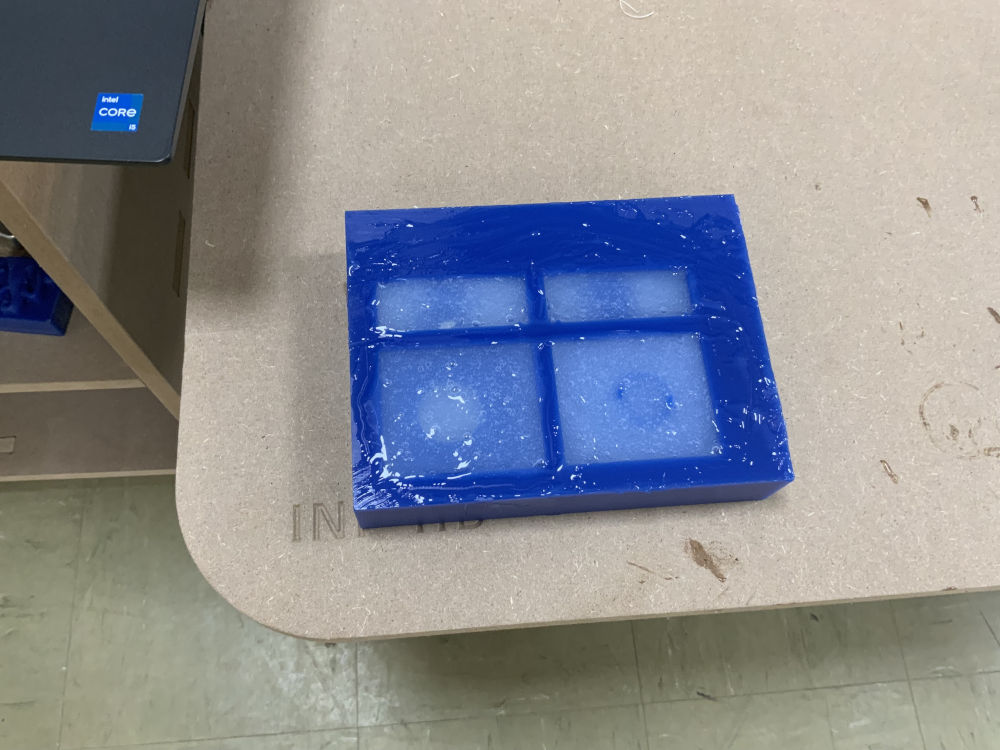
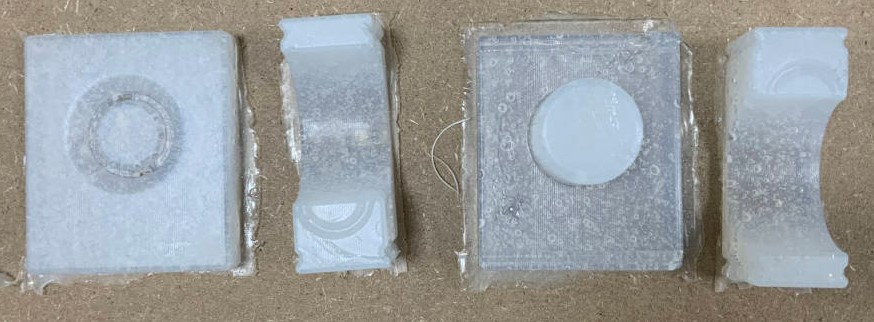
Realization of positive molds¶
For the realization of the positive molds, we used Smooth-cast 300 Series.
For the use of Smooth-cast 300 Series we have referred to the technical data sheet from which we have derived the essential information below.
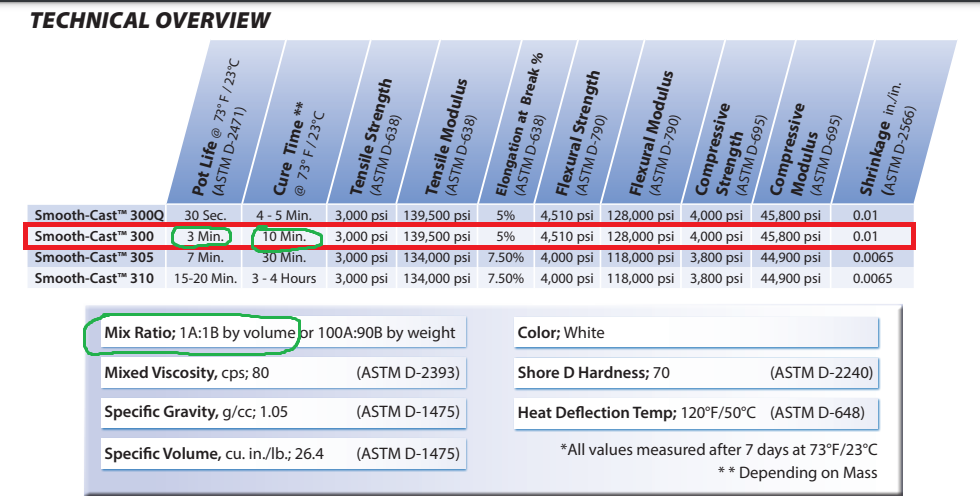
After following the instructions for mixing and pouring the Smooth-cast 300 Series we obtained the following results.
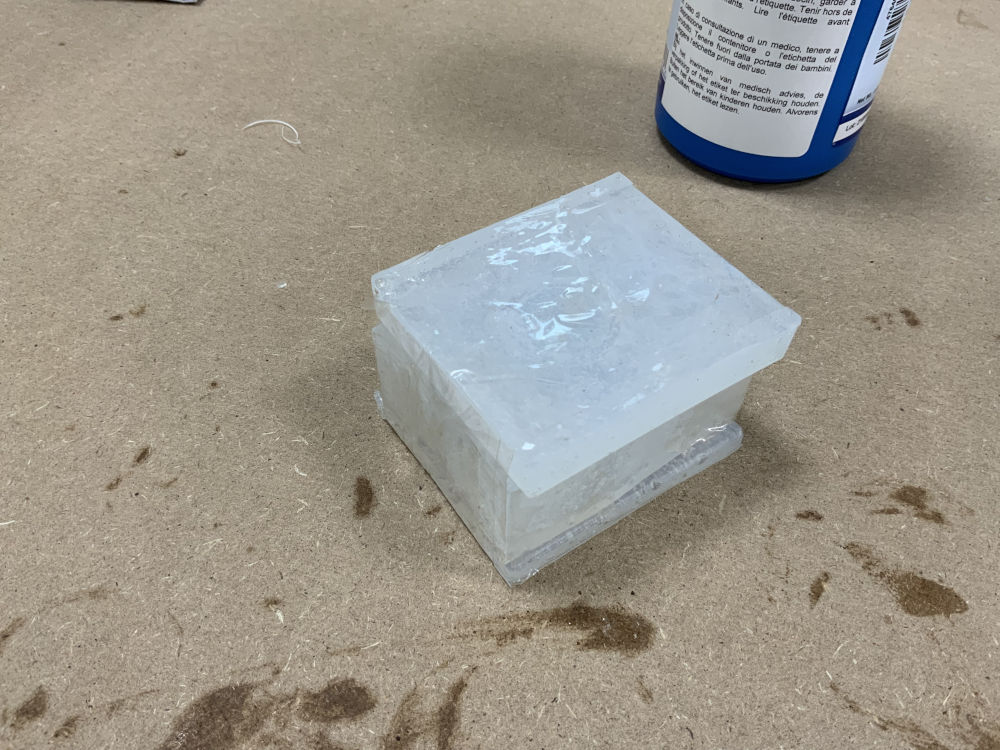
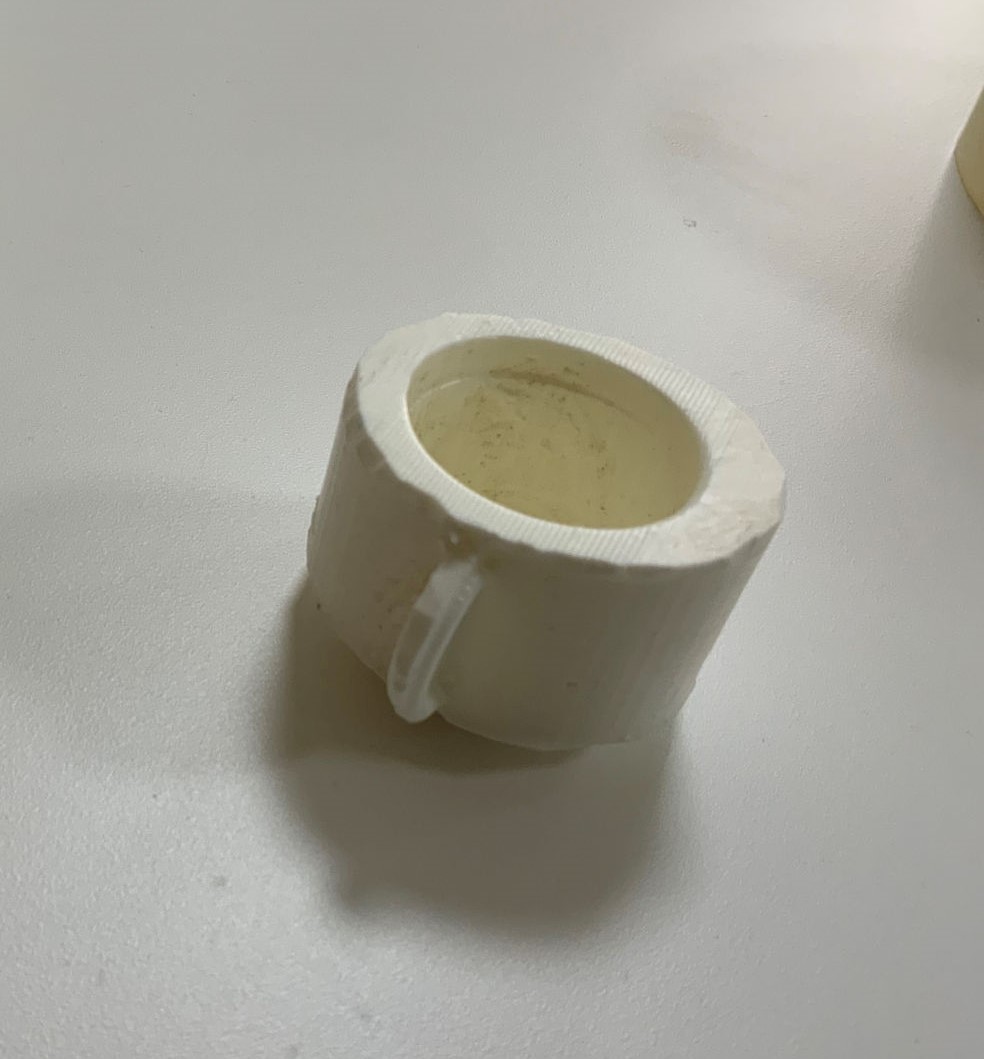
Remark¶
After making our mold, we noticed that some notches were missing to hold the mold in position. You can click here to download the new files.
